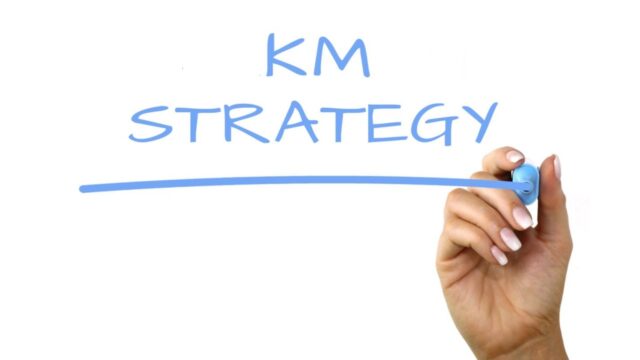
Factors affecting use of knowledge management practices among operational personnel in SMEs
This article is part of a series looking at knowledge management (KM) in small and medium enterprises (SMEs).
Operational personnel are a fundamental aspect of small and medium enterprises (SMEs) because they deal with daily operations and customers. However, too little research attention has been paid to knowledge management (KM) at the operational level in SMEs.
A recently published dissertation1 sets out to address this research gap. A systematic review was conducted, and then the literature was analysed thematically to identify factors affecting the use of KM practices among operational personnel in SMEs with a particular focus on the New Zealand situation.
Nineteen elements were identified which were then grouped into five factors.
Elements affecting KM in SMEs
- Time. It is concerned with the length of time that employees have to invest in understanding and utilising KM practises, as well as the length of time that managers have to promote this tool within organisations. There is an apparent limitation to the length of time available within SMEs to manage knowledge.
- Strategic fit. Refers to how well KM is prioritised within SMEs. SMEs are unlikely to have formal policies for KM practice. Therefore, SMEs require more strategic perspectives for KM, in terms of aligning their KM goals with the overall organisational strategy.
- Managerial support. This is another vital element in the management of knowledge within SMEs. Owner-managers’ personalities, backgrounds, and individual objectives are often the key driver of changes within SMEs. Knowledge is only managed within SMEs if the managers understand and value knowledge processes within their organisations.
- Finance. SMEs often have a relatively smaller cash reserve than larger organisations, meaning that SMEs have limited funds to manage knowledge. SMEs are restricted in their ability to build and utilise KM infrastructure and databases compared with larger organisations, so employees within SMEs manage knowledge using informal approaches.
- Employee skills. There is a tendency for SMEs to have lower-skilled employees than larger organisations because their size limits their ability to attract highly experienced and expert employees. As a consequence, employees with more experience and understanding of KM are likely to be engaged by larger organisations.
- Organisational culture. Entails values, norms, attitudes and behaviours that uniquely characterise the day-to-day functioning of organisations, and is considered a key element in the management of knowledge within SMEs. A positive culture places emphasis on the importance of collaboration between employees as a way to facilitate open knowledge exchange.
- Organisational structure. This is a foundation that facilitates the creation, transfer and utilisation of knowledge within SMEs. SMEs typically have a flat organisational structure relative to large organisations, and it is believed that a flatter organisational structure could foster knowledge sharing among employees.
- Human resource availability. Resource deficiencies are considered one of the most influential elements with regard to managing knowledge within SMEs. SMEs have a limited number of staff, which means that each employee essentially holds broad organisational knowledge. This can mean knowledge loss, especially when a few employees with broad organisational knowledge leave the organisation.
- Technology. This may be a major barrier to the management of knowledge within SMEs. The majority of knowledge within SMEs is shared through socialisation, using basic infrastructure and information technology, so the technology that is adopted should provide a systematic means of capturing knowledge from various employees. Developers and vendors of KM software and systems tend to target larger organisations more than smaller organisations. KM tools are the key to SMEs operating more widely without having to give up the benefits of their flatter structure, smaller size and openness.
- Socialisation. Knowledge is said to be better transferred within SMEs through informal means such as socialisation, with socialisation being one of the dimensions of knowledge conversion. There is a need to encourage employee interaction both formally and informally, so that employees that are not proximately located can still gain knowledge from one another.
- Class differentiation. Class differentiation is more profound in SMEs, as knowledge is mostly shared through socialisation and informal methods. Employees are more likely to experience difficulties associated with seeking and gaining knowledge from more experienced, ‘superior’ employees. Superior employees may be unwilling to share their knowledge for fear of becoming less relevant in the organisation. Therefore, to manage knowledge, SMEs need to encourage strong collaboration between employees.
- Codification. Refers to the documentation of knowledge from an otherwise tacit knowledge to an explicit one. With the informal culture of SMEs, it becomes a challenge to capture and store knowledge, as employees would prefer to share their tacit knowledge in an informal setting such as through socialisation. SMEs need to have methods in place to capture employee knowledge and provide a platform that ensures the sharing of, and easy access to, knowledge across their organisation.
- Information sharing. Employees within SMEs may be reluctant to share knowledge, as they believe their knowledge gives them edge over other employees. This is especially true for highly experienced staff, who are reluctant to acquire new perceptions or knowledge as they have strong beliefs in their own understanding.
- Trust. This is a fundamental element in managing knowledge because a high level of trust is required between employees before they are willing to share their knowledge. The greater the level of trust, the more open employees are to one another.
- Job security. This is the willingness of employees to share knowledge without the fear of losing their jobs. Where a job is insecure, employees are unwilling to share information so they can retain their roles within their organisations. This attitude hinders KM practice within SMEs.
- Knowledge protection. This is considered an essential element because of SMEs’ high employee turnover. Knowledge protection involves designing an organisation’s overall processes so that its knowledge and employees’ intellectual/personal capital are not illegally or inappropriately used, possessed and distributed.
- Risk avoidance. SMEs, because of their small size, are vulnerable to business failures, and have a small margin of error than larger organisations. So it is common to find that SMEs seek a clearer vision and some degree of certainty about the outcome of decisions they make. This has a direct impact on KM within SMEs, which are conditioned to prefer ‘predictability and visibility’ in their decision making and KM.
- Organisational politics. This is especially relevant in SMEs, where the opportunities for career advancement are limited. It is possible that organisational politics could prevent SMEs from disclosing sensitive knowledge (such as the organisation’s procedures and policies) because of the risk that employees may leave the organisation to set up their own competitive businesses.
- Incentives. Employees need to know that they are not sharing their knowledge for no reason. One such scheme is to incentivise the knowledge sharing process, that is, make the knowledge sharing process reciprocal. Such incentive schemes promote KM within organisations, as employees know that they can gain more knowledge from other employees by sharing their own.
Five categories of KM factors
The five categories of KM factors and their respective elements are shown in Figure 1. Factors internal to SMEs are colour-coded in green, external factors colour-coded red, and factors with both external and internal influence are colour-coded yellow.

Reference:
- Rotimi, E. O. O. (2016). Factors Affecting the Use of Knowledge Management Practices among Operational Personnel Within Small-to Medium-sized Enterprises in New Zealand: A Systematic Literature Review (Doctoral dissertation, Auckland University of Technology). ↩
Also published on Medium.



